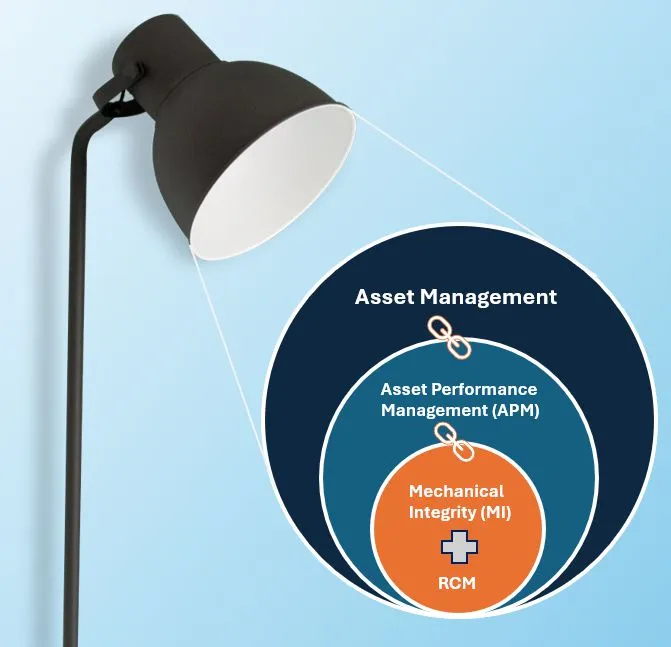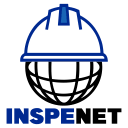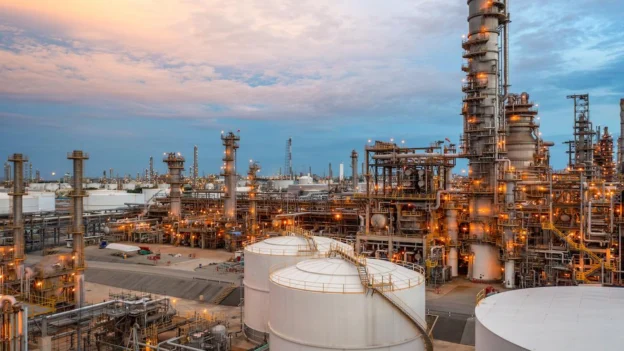Author: Raunak Agarwal
For owner-operators of asset-intensive companies such as oil and gas, chemicals, and petrochemicals, mechanical integrity and reliability-centered maintenance (RCM) are pivotal components of any comprehensive asset management program. However, most organizations tend to treat MI and RCM as separate programs, utilizing different tools and applications for each—where MI is administered by the engineering and inspection organization, and RCM is administered under maintenance. Yet, with the advancement of technology in this area, there is now a far more cost effective approach. The truth is that MI and RCM fall under the larger umbrella of asset management and reliability. These days, both can be efficiently managed with one software tool, improving transparency, efficiency, and stewardship while significantly reducing overall costs.
The Evolution of MI and RCM
In the past, MI and RCM evolved separately for many reasons. MI is driven mostly by American Petroleum Institute (API) standards, while RCM originated in the aerospace sector and its main base standards come under the Society of Automotive Engineers (SAE). Nowadays, asset management standards are relatively new and are driven by the International Organization for Standardization (ISO), as they’ve been in the past. While MI was driven by safety, environmental, and legal liability requirements, RCM was driven more by business needs to improve production certainty and reduce maintenance costs. Most asset-intensive organizations are still highly reactive due to fear that vital or critical work would fall behind immediate needs.
Industry Challenge
Organizations are not receiving the full potential of comprehensive asset management programs by keeping MI and RCM separate. As an example, assets have long been divided into fixed or static equipment and rotating equipment, which often put assets such as valves, electrical, instrumentation, and other assets out of sight. Asset types like tanks, piping, and structures have their own specific mix of risk management and maintenance, which could be missed either in inspections or maintenance plans. Most times, it is found that these assets are not registered in computerized maintenance management system (CMMS) and enterprise asset management (EAM) applications. If you are assessing new equipment as part of RCM assessment, some equipment is being tracked under an inspection program. A critical system can contain static or fixed assets such as vessels, tanks, exchangers, piping, etc., for which FMEA and Asset Basic Care (ABC) plans are not entered into the EAM for planning, scheduling, execution, and compliance tracking by the core maintenance organization.
Solution to the Problem – One Tool, One Software for Both
There has been an industry shift, and the changes brought forth are encouraging the process of integrating MI and RCM for the benefit of the care of all assets for a holistic picture. The drive for this is due to a gaining maturity in the companies that operational excellence requires all the stakeholders in the facility to be on the same team, driving performance and reliability for safe and financially successful operations. Moreover, accounting, finance, engineering, maintenance, inspection, procurement, and other functions are working together to improve and sustain the assets. The ISO 55000 asset management standard references what assets make up a business and how all stakeholders need to be held accountable for them. Industry 4.0, Digital Transformation, and IIoT are providing tools and guidance that make information sharing and performance tracking easier.

Benefits
Managing all aspects of an organization’s asset management program through a unified software platform delivers significant cost savings and time efficiencies for owner-operators across industries. From an IT perspective, operators can expect considerable reductions in software maintenance, training, updates, and patches. Integrating data for analytics and gaining actionable insights from various asset types in one digital tool enhances transparency and accessibility of information. This integration lays the groundwork for a robust digital strategy, paving the way for AI and machine learning applications in asset management.
Furthermore, end users benefit from an improved experience, as they no longer need to master multiple disparate software systems. Choosing the right software that seamlessly connects with existing ERP/EAM/CMMS platforms creates a complete feedback loop, supporting a continuous improvement plan from strategy development to execution and optimization.
Key areas of focus for effective asset management solutions include:
- Unified View for All Asset Types: A single platform that covers a wide range of asset types, including mechanical, electrical, civil, and more.
- Configurable and Adaptable Framework: Solutions that can be tailored to meet specific customer needs and risk models.
- In-App Analytics and Trending: Tools to provide general analytics for daily operations and actionable insights.
- Regulatory Compliance: Adherence to relevant codes and standards, facilitating compliance during audits.
- Flexibility: Accommodates various components of asset management while keeping costs low.
- Key Performance Indicators (KPIs): Capabilities to generate management reports on metrics such as failure rates, operational availability, and scheduling.
- Condition Monitoring: Tools to track equipment parameters that directly impact performance and risk, enhancing risk analysis and mitigation strategies.
By implementing a comprehensive asset management solution, organizations can streamline operations and drive continuous improvement across their operations.
How AsInt Integrates Mechanical Integrity and Reliability
AsInt’s applications for mechanical integrity (MI) are revolutionizing asset management by seamlessly bridging the gap between mechanical integrity and RCM through the integration of SAP Asset Performance Management (APM) solutions and applications. By unifying needs for varied asset classes, critical data, analytics, and workflows, these applications enable organizations to adopt a risk-based approach that enhances asset reliability while optimizing maintenance strategies. This holistic approach ensured compliance with the industry regulations and tracked key metrics and KPIs in one central place. This synergy empowers customers to reduce operational risks, extend asset lifecycles, and achieve cost efficiencies. With a strong focus on digital transformation and industry-specific needs, AsInt and SAP together deliver a compelling value proposition, driving better business outcomes and offering a robust go-to-market strategy for sustainable and intelligent asset management.This stage is where the current work processes in most organizations break down, as the link between field execution and the RBI software package is fragile and heavily dependent on manual inputs.
Conclusion
The integration of MI and RCM into a unified asset management approach is no longer only advantageous; it is also essential. For owner-operators in asset-intensive sectors, recognizing the interdependence of MI and RCM can lead to improved operational efficiency, enhanced safety, and significant cost savings.
By leveraging a single software tool that encompasses both MI and RCM, organizations can create a cohesive strategy that aligns all stakeholders—from maintenance to finance—toward common goals of performance and reliability. By investing in integrated solutions, companies can unlock the full potential of their assets, ensuring they remain competitive in a challenging market while safeguarding their financial and operational health for the future.


